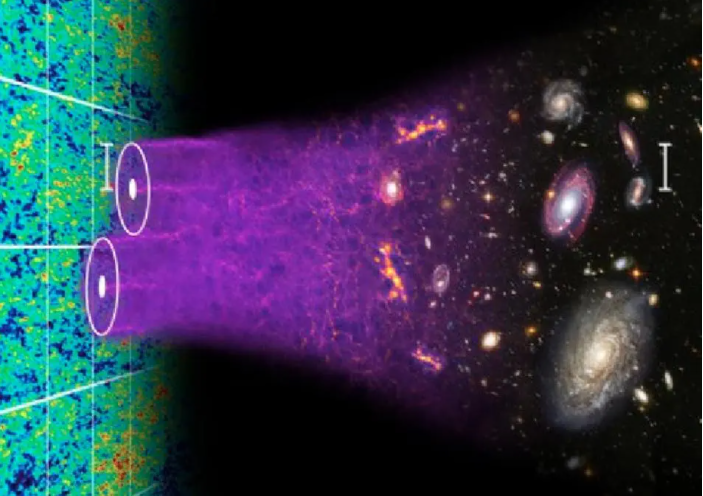The more curious we get about the great cosmic unknowns, the more unanswered questions our investigations of the Universe will reveal. Inquiring about the nature of anything — where it is, where it came from, and how it came to be — will inevitably lead you to the same great mysteries: about the ultimate nature and origin of the Universe and everything in it. Yet, no matter how far back we go, those same lingering questions always seem to remain: at some point, the entities that are our “starting point” didn’t necessarily exist, so how did they come to be? Eventually, you wind up at the ultimate question: how did something arise from nothing? As many recent questioners, including Luke Martin, Buzz Morse, Russell Blalack, John Heiss and many others have written:
“Okay, you surely receive this question endlessly, but I shall ask nonetheless: How did something (the universe/big bang) come from nothing?”
This is maybe one of the biggest questions of all, because it’s basically asking not only where did everything come from, but how did all of it arise in the first place. Here’s as far as science has gotten us, at least, so far.
The largest-scale observations in the Universe, from the cosmic microwave background to the cosmic web to galaxy clusters to individual galaxies, all require dark matter to explain what we observe. (Credit: Chris Blake and Sam Moorfield)
Even with the known uncertainties taken into consideration, the whole array of data we’ve acquired today lead to a strikingly consistent image as we gaze out at the Universe. Our Universe is made up of matter (rather than antimatter), follows the same physical laws everywhere and at all times, and started 13.8 billion years ago with a hot Big Bang. It’s controlled by General Relativity, and it’s expanding, cooling, and gravitating. Dark energy (68%) and dark matter (27%) dominate, with regular matter, neutrinos, and radiation accounting for the remainder.
Of course, it’s full of galaxies, stars, planets, heavy elements, and intelligent and technologically evolved life in at least one area today. These formations didn’t always exist; rather, they emerged as a consequence of cosmic development. Scientists in the twentieth century were able to recreate the chronology for how our Universe evolved from a relatively uniform Universe devoid of complex structure and consisting only of hydrogen and helium to the structure-rich Universe we see today in a major scientific leap.

We may question where each particular structure or component of that structure comes from if we start now and go backwards in time. We might then question, “fine, but where did that come from and how did that arise?” with each response until we’re forced to say, “we don’t know, at least not yet.” Then, at long last, we may look at what we’ve got and wonder, “How did it come to be, and is there any chance it could have come from nothing?”
So, let’s get this party started.
Complex molecules, which must have emerged from the atoms of the periodic table: the basic components that make up all of the regular stuff in the Universe today, are the source of life we have today. These atoms didn’t just appear in the Universe; they took several generations of stars living and dying, with the results of their nuclear processes being recycled into future generations of stars. Planets and sophisticated chemistry would be impossible without it.
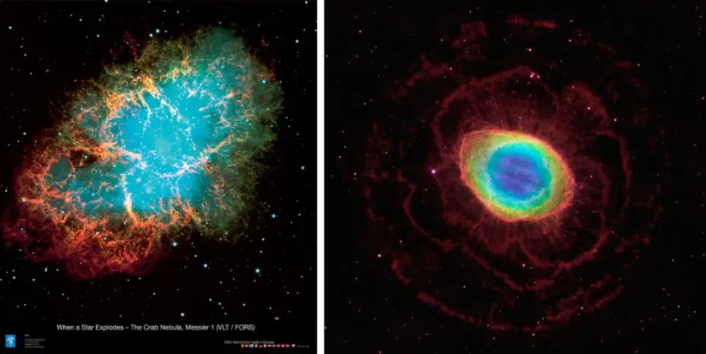
We require the following ingredients to create contemporary stars and galaxies:
- Small galaxies and star clusters are drawn together by gravity, forming giant galaxies and generating fresh waves of star creation.
- which necessitated the existence of pre-existing mass collections resulting from gravitational growth
- which need the formation of dark matter haloes early on in order to prevent star formation events from ejecting matter back into the intergalactic medium,
- To produce the cosmic microwave background, the light components generated in the hot Big Bang, and the abundances/patterns we observe in them, the appropriate combination of normal matter, dark matter, and radiation is required.
- which need early seed variations — density flaws — in order to gravitationally evolve into these structures,
This necessitates a method for manufacturing these flaws, as well as a method for creating dark matter and the initial levels of normal matter.
These are the three essential components that, in the early phases of the hot Big Bang, were necessary to give origin to the Universe as we know it today. Assuming that the principles of physics and spacetime itself must exist in addition to matter/energy, we should definitely include them as required constituents that must originate in some way.
In other words, when we question if we can create a Universe from nothing, we must include these fresh, hitherto inexplicable phenomena.

To acquire more matter than antimatter, we’ll have to extrapolate back to the very beginning of the Universe, when our understanding of physics is still quite shaky. The principles of physics as we know them are symmetric between matter and antimatter in certain ways: every reaction we’ve ever made or witnessed can only generate or destroy equal quantities of matter and antimatter. Despite starting off in a tremendously hot and dense state where matter and antimatter could both be generated in copious numbers, the Universe we had had to find a means to establish a matter/antimatter imbalance when none existed before.
This may be accomplished in a variety of ways. Although we don’t know which scenario occurred in our early Universe, all of them have the three ingredients listed below:
- a series of out-of-equilibrium situations that naturally occur in an expanding, cooling Universe
- a method of generating baryon-number-violating interactions, as allowed by the Standard Model through sphaleron interactions (and beyond-the-Standard-Model scenarios allow in additional ways),
- and a technique to produce enough C and CP violation to establish a large enough matter/antimattery imbalance
All of these elements are present in the Standard Model, but not in sufficient amounts. Even while we don’t know precisely how it occurred, if you think of a matter/antimatter symmetric Universe as “a Universe with nothing,” it’s almost clear that the Universe formed something from nothing.
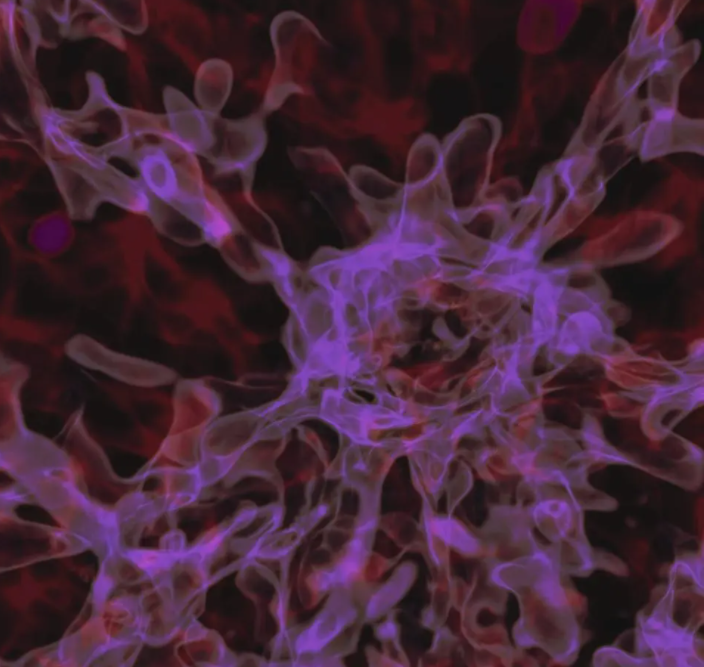
Similarly, there are several potential methods for producing dark matter. We know that whatever dark matter is, it can’t be made up of any particles seen in the Standard Model, based on intensive testing and searches. Whatever it is, it requires novel physics beyond what is now understood. However, there are a variety of ways it may have been made, including:
- after being thermally produced in the early, hot Universe and failing to totally annihilate away, staying stable (like the lightest supersymmetric or Kaluza-Klein particle),
- or a phase shift that happened naturally when the Universe expanded and cooled, tearing huge particles from the quantum vacuum (e.g., the axion),
- as a new kind of neutrino that may either mingle with existing neutrinos (i.e., a sterile neutrino) or exist as a heavy right-handed neutrino in addition to ordinary neutrinos,
- or as a pure gravitational event that produces an ultramassive particle (e.g., a WIMPzilla).
Why is there dark matter now, whereas the rest of the Universe seemed to operate perfectly without it at first? There has to be some method to create this “thing” when none existed before, yet all of these situations need energy. Where did all that energy come from, then?
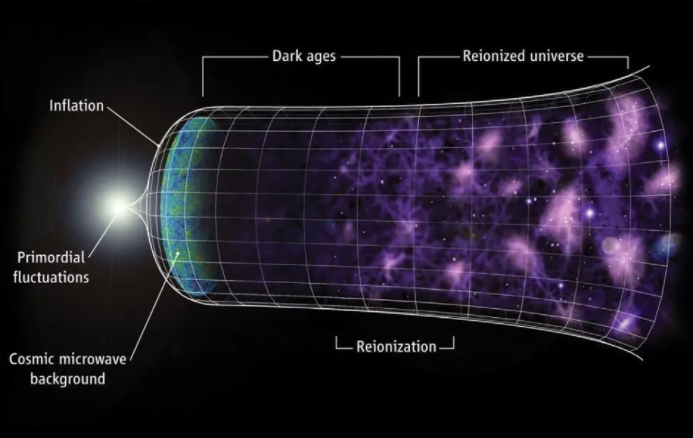
Perhaps it really did emerge from nothing, according to cosmic inflation, our dominant hypothesis of the Universe’s pre-Big Bang beginnings. This necessitates some explanation, and that is what “a Universe from nothing” most often refers to. (It was also used in the title of the novel of the same name.)
- When you conceive about the early phases of the hot Big Bang, you have to visualize something very hot, dense, high-energy, and almost uniform. We usually have two possibilities when we question, “How did this happen?”
- We could take Lady Gaga’s approach and simply say it was “born this way.” There is no other explanation for the features that the Universe was created with, which we call beginning conditions. This strategy is referred to as “giving up” by theoretical physicists.
Alternatively, we can do what theoretical physicists do best: devise a theoretical mechanism to explain the initial conditions, tease out concrete predictions that differ from the standard, prevailing theory’s predictions, and then go out and measure the critical parameters.
The second method resulted in cosmic inflation, which fundamentally altered our understanding of how our Universe came to be.
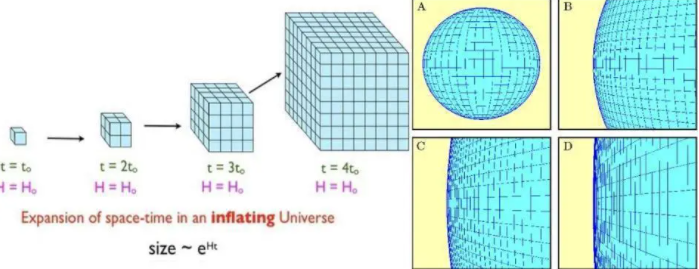
Rather than extrapolating “hot and dense” back to an infinitely hot, infinitely dense singularity, inflation essentially says, “Perhaps the hot Big Bang was preceded by a period where an extremely large energy density was present in the fabric of space itself, causing the Universe to expand at a relentless (inflationary) rate, and then when inflation ended, that energy was transferred into matter-and-antimatter-and-radiation, creating what we see as the hot Big Bang: the
This not only generates a Universe with the same temperature everywhere, spatial flatness, and no residual relics from a supposed grand unified period, but it also predicts a certain sort and spectrum of seed (density) fluctuations, which we later saw. A natural process has generated the whole visible Universe, rich in structure, as we perceive it today, from nothing more than empty space — yet it is empty space loaded with a significant quantity of field energy.
The enormous notion of creating a Universe from nothing is intriguing, but it isn’t for everyone.
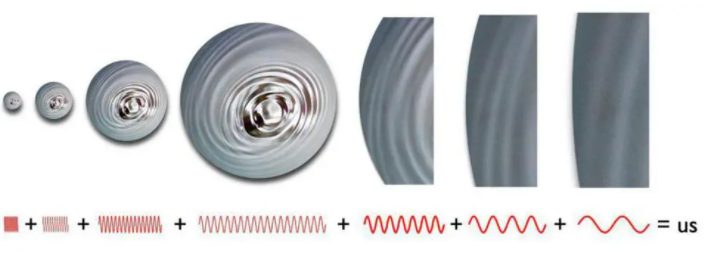
A Universe in which space-and-time still exist, together with the rules of physics, basic constants, and some non-zero field energy inherent in the fabric of space itself, is highly dissociated from the concept of nothingness for a substantial portion of the population. After all, we may envision a place outside of space; a moment beyond the constraints of time; a collection of circumstances that are not constrained by physical reality. And such imaginings are absolutely correct, at least philosophically, if we consider physical realities as things that must be eliminated in order to achieve genuine nothingness.
That, however, is the distinction between philosophical and physical definitions of emptiness. There are four scientific definitions of nothing, as I stated in 2018, and they’re all legitimate depending on your context:
- When your “thing” of interest didn’t exist, there was a period when
- Physical space that isn’t occupied.
- Empty spacetime in the lowest possible energy level, and
- When you take away the whole Universe and the rules that govern it, you’re left with…
If we use the first two definitions, we can absolutely state we created “a Universe from nothing”; if we use the third, we can’t; and, regrettably, we don’t know enough to tell what occurs if we use the fourth. The idea of genuine emptiness is physically ill-defined since there is no physical theory to explain what occurs outside of the Universe and beyond the range of physical rules.
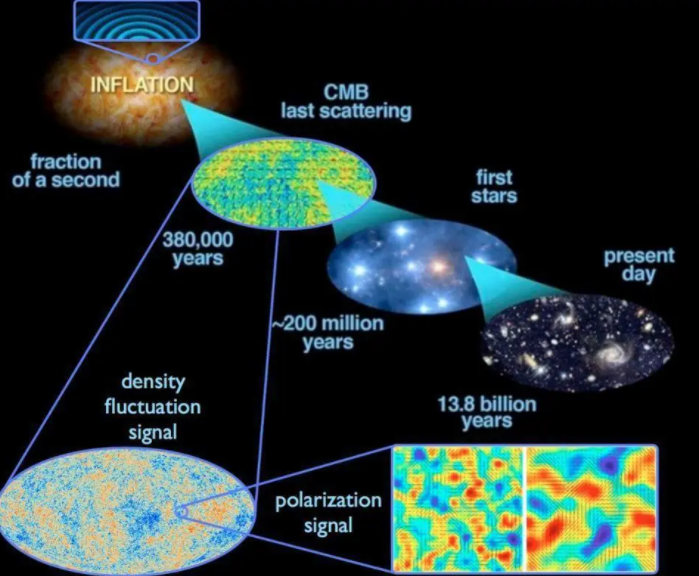
It’s hard to make sense of pure emptiness in the perspective of physics. What does it mean to be outside of space and time, and how can space and time arise from a condition of non-existence in a sensible, predictable manner? How can spacetime appear at a certain place or time when there is no concept of place or time without it? Where do the laws that govern quanta — fields and particles alike — come from?
This line of reasoning even presupposes that space, time, and the rules of physics aren’t everlasting, despite the reality that they are. To the contrary, any theorems or proofs depend on assumptions whose validity hasn’t been thoroughly proven under the circumstances to which we’d want to apply them. Yes, the Universe as we know it looks to have formed from nothing if you accept a physical meaning of “nothing.” When physical limits are removed, however, everything about our ultimate cosmic beginnings vanishes.
Unfortunately for us all, inflation, by its very nature, erases any information that may have been imprinted on our visible Universe from a previous state. We can only make conclusions about subjects for which tests involving our physical world can be developed, notwithstanding the unlimited nature of our imaginations. Any other consideration, even the concept of absolute emptiness, is only a product of our imaginations, no matter how logically reasonable it may seem.


